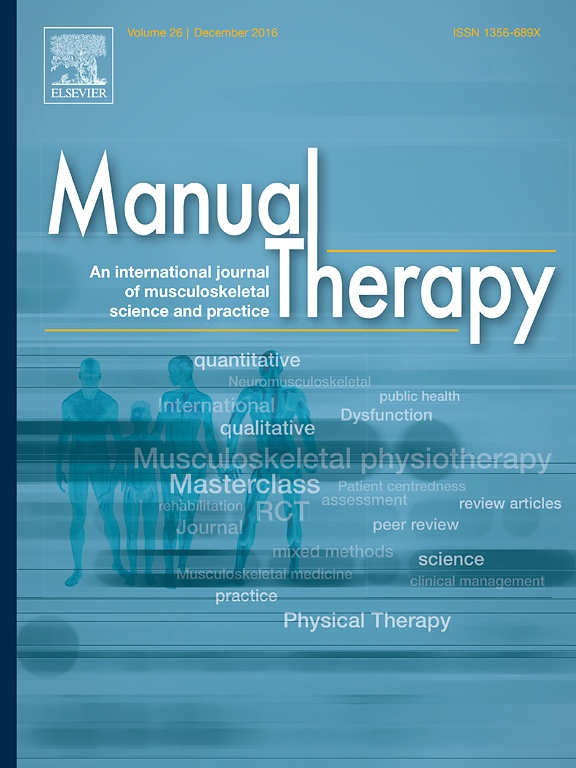
No significant difference between three manual therapy techniques for chronic neck pain

No significant difference between three manual therapy techniques for chronic neck pain
Is one better than another?: A randomized clinical trial of manual therapy for patients with chronic neck pain
Man Ther. 2014 Jan 11. pii: S1356-689X(13)00214-2. doi: 10.1016/j.math.2013.12.002.Did you know you're eligible to earn 0.5 CME credits for reading this report? Click Here
Synopsis
61 patients with mechanical neck pain were randomized to receive either sustained natural apophyseal glide (SNAG), mobilization, or high-velocity, low-amplitude (HVLA) techniques for manual therapy. The effectiveness of the three techniques were compared in terms of immediate and short-term outcomes of pain, disability, mobility, and the global rating scale. After 3 months, analysis revealed no si...
To view the full content, login to your account,
or start your 30-day FREE Trial today.
FREE TRIAL
LOGIN
Forgot Password?
Explore some of our unlocked ACE Reports below!

Learn about our AI Driven
High Impact Search Feature
Our AI driven High Impact metric calculates the impact an article will have by considering both the publishing journal and the content of the article itself. Built using the latest advances in natural language processing, OE High Impact predicts an article’s future number of citations better than impact factor alone.
Continue



 LOGIN
LOGIN

Join the Conversation
Please Login or Join to leave comments.